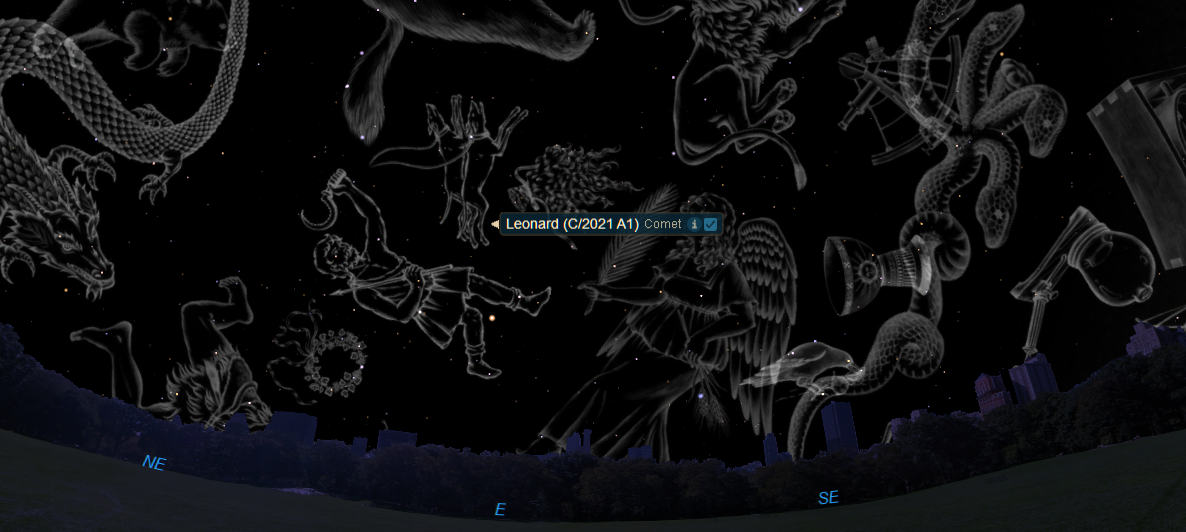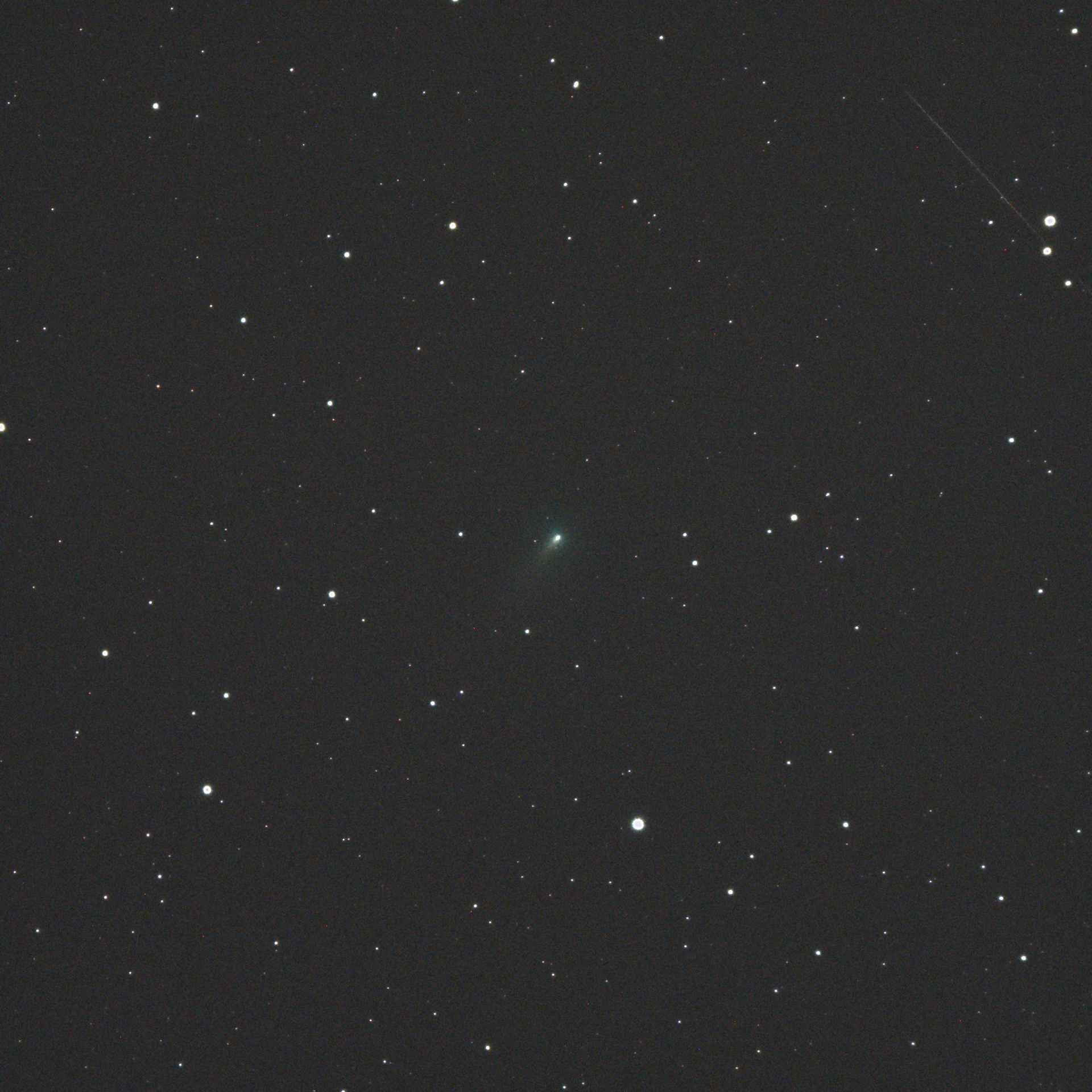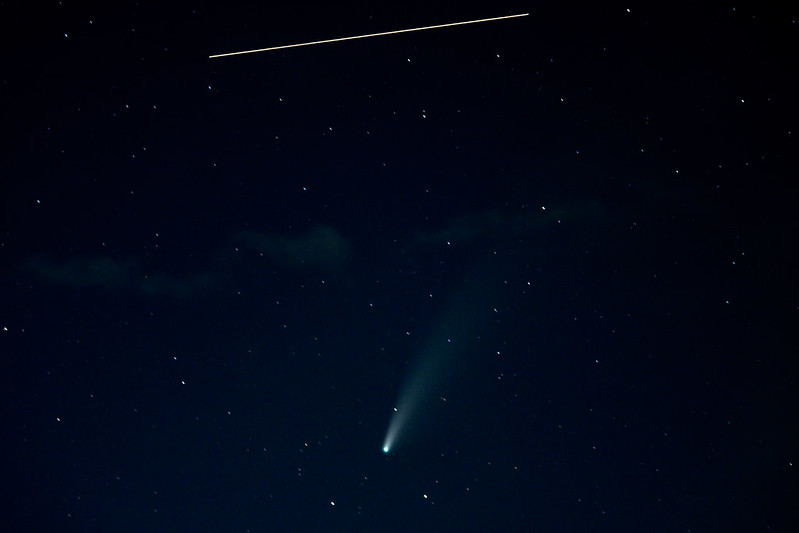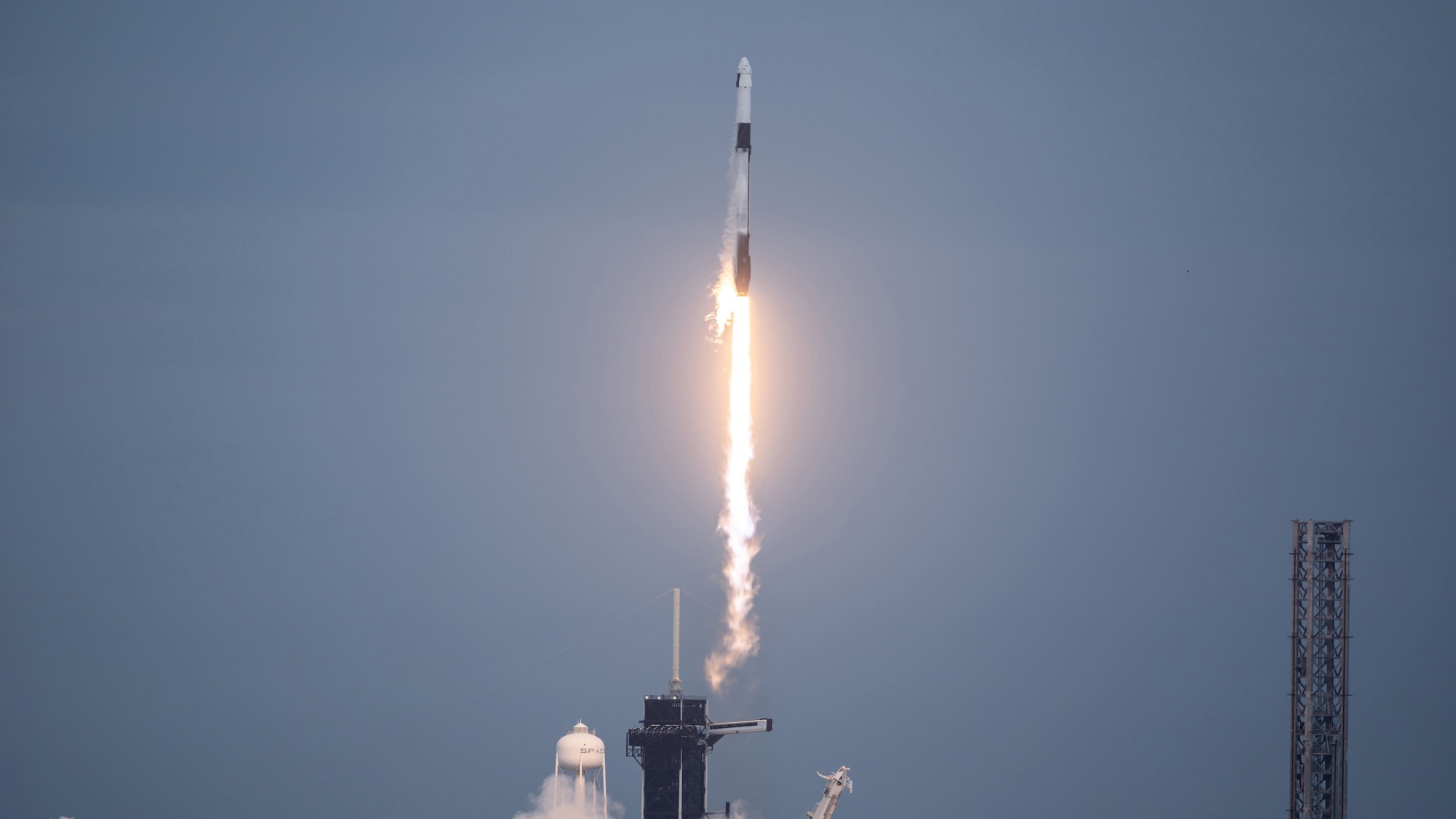
It is unusual to see a comet at its best: Most comets are brightest nearest the sun, just when they're most difficult to spot against the sun's glare or hidden below the horizon.
Comet C/2021 A1 (Leonard) is, alas, no exception. But it should be visible in small telescopes and binoculars and quite possibly even dimly to the unaided eye in the Northern Hemisphere's pre-dawn sky as it increases in brightness for at part of December, and later in the month perhaps even briefly in the evening sky, just after sunset.
Astronomer Gregory J. Leonard, a senior research specialist, discovered the comet that now bears his name on Jan. 3 at the Mount Lemmon Infrared Observatory, located in the Santa Catalina Mountains, approximately 17 miles northeast of Tucson, Arizona.
Editor's note: Comet Leonard is a great target for amateur astronomers in December's night sky. Need a telescope of binoculars to see planets in the sky? Check out our guide for the best binoculars deals and the best telescope deals available right now. Our best cameras for astrophotography and best lenses for astrophotography can also help you pick the best imaging gear to spot the next comet.
Related: Night sky, December 2021: What you can see this month [maps]
Since its discovery, the comet has been approaching both the sun and Earth but has been a very dim object. Most comets remain too faint for amateur telescopes to catch, but for a short while in December, Comet Leonard should rise out of the ordinary.
The icy ball has come a long way to make this pre-Christmas appearance to us. About 35,000 years ago, the comet was at the far end of its elongated elliptical orbit — aphelion — some 3,500 astronomical units from the sun. One astronomical unit (AU) is the equivalent of the Earth's average distance from the sun: 92,955,807 miles (149,565,894 kilometers).
Get the Space.com Newsletter
Breaking space news, the latest updates on rocket launches, skywatching events and more!
So, 35 millennia ago, Comet Leonard resided some 325 billion miles (525 billion km) from the sun, enveloped in an almost unimaginably cold environment, hovering just a fraction of a degree above absolute zero, the temperature at which all molecular motion stops. Now, Comet Leonard is in the home stretch of what likely will be its very last visit to the sun, and its conglomeration of icy gases like methane, ammonia and water vapor is reacting to the increasing warmth of the sun.
December is Leonard's month

Comet Leonard's brightness should noticeably ramp up as it approaches the Earth. In the early days of December, observers who are up around the break of dawn (roughly 5:30 a.m. local time), should concentrate on the eastern sky about halfway up from the horizon to the point directly overhead. Now, with binoculars, scan that part of the sky roughly midway between the 3rd-magnitude star Cor Caroli in the constellation Canes Venatici (the Hunting Dogs) and the 3rd-magnitude star Muphrid in the extended foot of Boötes the Herdsman.
There, you should run across a circular, fuzzy, 6th-magnitude glow perhaps sporting a tail. That will be Comet Leonard.
For most of us, the second week of December is when Comet Leonard should be most interesting, offering the best compromise between increasing brightness and decreasing altitude at the start of dawn. Moreover, the sky will be free of moonlight, as it will be shortly after the new moon of Dec. 4.
On the morning of Dec. 6, about two hours before sunrise, look toward the eastern sky. You will immediately notice the brilliant orange-yellow star, Arcturus in the constellation of Boötes the Herdsman. Now, with binoculars, scan that part of the sky about 5 degrees to the left of Arcturus and you should see Comet Leonard. The comet's dust tail, which started to lengthen noticeably during early November, should be pointing almost straight up.
The comet's magnitude is forecast to be +5.5; bright enough to be glimpsed without any optical aid in a dark sky free of light pollution. The comet will then be 31.9 million miles (51 million km) from Earth and approaching us by about 1.5 million miles (2.4 million km) per day, so it will be brightening noticeably, but it will also drop rapidly lower in the eastern sky with each passing day.

By the morning of Dec. 12, Comet Leonard will have brightened to magnitude +4.3, but will be only 10 degrees above the eastern horizon at the start of morning twilight. (Your clenched fist at arm's length measures roughly 10 degrees.) According to NASA's Jet Propulsion Laboratory in California, the comet will be making its closest approach to Earth that same day, reaching just 21,687,279 miles (34,902,292 km) away at 10:54 a.m. EST (1354 GMT).
That day will mark the end of its morning visibility, but Comet Leonard will return for several "cameo appearances" in the evening sky. On Dec. 17, it will be sliding 5° below dazzling Venus. With binoculars, look for it very low toward the southwest horizon about an hour after sunset.
Forward scatter might improve visibility
Some skywatchers are hoping that the comet will over-perform in terms of brightness expectations, due to a phenomenon known as "forward scatter." In such a situation, a back-lit comet can appear significantly brighter because the dust and ice crystals emanating from the comet's nucleus scatter light toward the observer.
During the middle part of December, Comet Leonard will be at a very favorable phase angle relative to the sun and Earth, suggesting that it might get 1 to 2 magnitudes brighter than what current predictions suggest; put another way, the comet might exceed brightness estimates by 2.5 to 6.3 times. Comets that have benefited from forward scattering include Skjellerup-Maristany in 1927, West in 1976, Bradfield in 1980 and McNaught in 2007. All four comets surged in brightness and became much brighter than anticipated.
Not all comets react favorably to forward-scattering, however. Will Comet Leonard benefit? We can only watch and see what happens.
The comet will likely be lost to view after Christmas, reaching its closest point to the sun on Jan. 3 at a distance of 57.2 million miles (92 million km). Once it rounds the sun it will be thrown out of the solar system into a slightly hyperbolic orbit, never to be seen again.
Editor's Note: If you snap an amazing night sky picture and would like to share it with Space.com's readers, send your photos, comments, and your name and location to spacephotos@space.com.
Joe Rao serves as an instructor and guest lecturer at New York's Hayden Planetarium. He writes about astronomy for Natural History magazine, the Farmers' Almanac and other publications. Follow us on Twitter @Spacedotcom and on Facebook.
Join our Space Forums to keep talking space on the latest missions, night sky and more! And if you have a news tip, correction or comment, let us know at: community@space.com.

Joe Rao is Space.com's skywatching columnist, as well as a veteran meteorologist and eclipse chaser who also serves as an instructor and guest lecturer at New York's Hayden Planetarium. He writes about astronomy for Natural History magazine, Sky & Telescope and other publications. Joe is an 8-time Emmy-nominated meteorologist who served the Putnam Valley region of New York for over 21 years. You can find him on Twitter and YouTube tracking lunar and solar eclipses, meteor showers and more. To find out Joe's latest project, visit him on Twitter.
